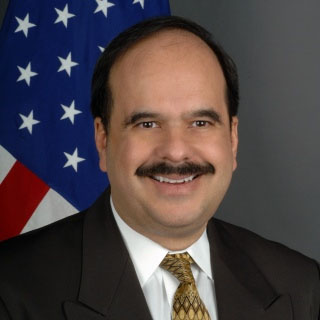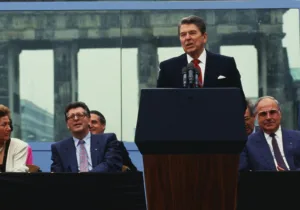Strong revulsion to shocking events is a perfectly natural human reaction. So much of the reaction to the jarring acts of just a few weeks ago, of hundreds of Trump supporters trashing the US Capitol and all it symbolizes—call it a riot, mob action, violent entry, insurrection—is right and natural.
Other reactions—like comedian Jimmy Kimmel calling for Trump supporters to kill themselves or be removed like a cancerous tumor, or pundit Max Boot calling for censoring right-wing broadcast media—are amateur backlashes made in the heat of the subsequent days to terrible, destructive, and hurtful events. Other reactions by Democratic politicians, to take this or that action against elected representatives, are both partisan and understandable.
But as shocking as the January 6 lawlessness was, I was surprised how quickly people who should know better switched gears and called for some version of the Global War on Terror to be fought—not on some distant desert or foreign mountain top—but inside America against American citizens. The idea is to move resources being used for counterterrorism to domestic violent extremism. I spent quite a few years at the end of my diplomatic career in the CT/CVE (Counterterrorism/Countering Violent Extremism) world, and this talk fills me with trepidation. Who these extremists actually are seems to be unclear. “Domestic terrorists”? White supremacists, right-wingers, QAnon conspiracy theorists, 74 million Trump voters?
Even speaking about who these American extremists are seems to follow the opposite of the received wisdom of the global terrorism years. Then it was about being careful about language and defining the adversary as narrowly as possible. The word jihadist was problematic. So was the term Islamist (which sounds too much like Islamic) terrorism. ISIS or the Islamic State was replaced by Daesh in order to avoid using the word Islamic, even though this group and other Salafi jihadist organizations soaked themselves in religion. The narrative was that they represented a tiny part of Islam, in no way representative of the larger group.
We were told that ISIS and other extremists wanted to eliminate the “gray zone” where Muslims who were pious, conservative, or alienated—but not actually terrorists—would be forced to choose in a binary Manichean conflict where only one side represented Islam and the other, all the evil and disbelief in the world. Scholars pointed out that one of the strengths of America, in comparison to Europe, was the freedom of belief that existed; our grey zone was very broad! We were told that it was important to understand root causes and not to give offense.
So much for being careful now! The fact is that when people talk about applying the lessons learned in the global fight against al-Qaeda and ISIS to American citizens, they mostly don’t know what they are talking about or are being incredibly reckless.
Sure, technical advances and greater legal flexibilities engendered by statutes like the Patriot Act may have some domestic applicability. But the fact is that the US and its allies gained the upper hand—for now anyway—in the war against the Global Jihadist Movement by brute force. President Barack Obama killed in drone strikes more people (including a least a couple of American citizens) in eight years than the Spanish Inquisition killed in three centuries. President Donald Trump continued that path. After the costly wars in Afghanistan and Iraq, the United States settled on a largely successful strategy of airstrikes coupled with empowering proxy forces on the ground to decimate terrorist safe-havens. Just take a look at what Mosul or Raqqa were after liberation.
Brute force plus censorship and cyberwarfare were the key tools in the fight against global terror. These really aren’t transferable to a polarized internal political environment. Even loose talk about such things only succeeds in further polarizing that internal American political environment. Where the West (and even our Muslim allies) struggled was in the ideological realm. The US government and American tech companies could not form a counternarrative to the siren call of Salafi jihadism very well. Even Muslim states, many of them authoritarian, struggled in the ideological realm. The jihadists weren’t outdebated; they were droned to death or muffled online.
Government bureaucrats do not counter deeply cherished, sincerely held beliefs and resentments that are considered objectionable very well. One of the catchphrases of the struggle against jihadism was the need to find “credible voices” that would be listened to, credible voices that were rarely found.
One byproduct of those years was the rise of the professional counterterrorism expert. Some were very deep, impressive, and nuanced thinkers—honorable men and women. A much larger cabal of professional grifters and lightweights successfully fed for years at the government trough but probably did more harm than good. The idea of repeating these clumsy charades that were done among foreign audiences among American citizens just boggles the mind.
Incoming President Joe Biden sounded all the right notes about national unity and reconciliation in his inaugural speech. It remains to be seen whether he will actually unleash the hounds of the national security state on a threat that may be both real and overstated. Americans having dangerous conspiracy theories or crackpot ideas is nothing new. My unsolicited advice would be to use the very powerful existing law enforcement capabilities and authorities to scoop up actual lawbreakers, do a better job teaching civics and inclusive, non-judgmental patriotism in schools, and eschew the toxins of identity politics—rather than ratcheting up some sort of high-profile new crusade that risks alienating more people wallowing in self-pity and anger.







 Sponsor a student for Christianity & National Security 2024
Sponsor a student for Christianity & National Security 2024